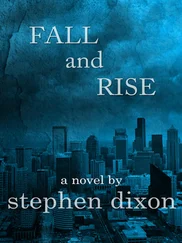Brian handed her a business card that read LT. BRIAN “MOOSE” SWEENEY—INSTRUCTOR, TOP GUN FIGHTER WEAPONS SCHOOL, MIRAMAR, CALIF. Julie thought it was a gag he used to impress women in bars. It was real, if somewhat dated. Julie was, in fact, impressed, and seven months later she became Mrs. Brian Sweeney.
By the summer of 2001, Brian and Julie had bought a house in Barnstable on Cape Cod, where she’d been hired as a high school health teacher. They had two dogs, and their talks about parenthood had grown more frequent. More than two years into their marriage, the twenty-nine-year-old Julie remained awestruck by her thirty-eight-year-old husband. She admired his self-confidence; she loved how this large and powerful man had a gentle voice that calmed her; she treasured the way he made her feel safe; she marveled at the practical intelligence that enabled him to build a house, while his spiritual side gave him peaceful assurance about an afterlife.
During the weeks before September 11, they’d talked about death. Brian told Julie that if he died, she should throw a party. “You celebrate life,” he said. “You invite all my friends and you drink Captain Morgan and you live. And if you find somebody, you remarry. I won’t be angry or jealous or whatever.”
Julie looked straight back at him and said: “Well, listen, if I ever die, you are not to do any of that. You are not to find anybody else.”
Brian laughed. “Someday you’ll figure that out.”
Brian traveled to California for work one week per month, regularly aboard United Flight 175. He’d normally be gone Monday through Friday, but he’d decided to extend his summer weekend and instead leave on Tuesday, September 11.
The night before the flight, they ate Chinese food, then Brian gave himself a haircut before starting to pack. Several weeks earlier, Brian found a photograph of Julie when she was five years old, with wet hair and a goofy smile. “This is the sweetest picture I’ve ever seen of you,” Brian told her when he discovered it. While Brian packed, Julie sneaked the photo into his suitcase, so he’d find it again when he reached California.
The morning of September 11, Julie drove Brian to the Cape Cod airport in Hyannis for a connecting flight to Boston. He was dressed in the same “Sweeney uniform” of jeans, denim shirt, work boots, and baseball cap he’d worn when they met. Brian kissed Julie, then surprised her with news that he’d be back a day early, so they could spend the last summer weekend together.
AMID THE FAMILIES, business travelers, and tourists were five Middle Eastern men who fit none of those categories. They selected seats almost exactly in the pattern Mohamed Atta and his four collaborators used aboard American Flight 11. Once again, the tactical arrangement placed members of their group close to the cockpit, while others could cover both aisles if anyone came forward to challenge them from the rear of the plane.
The first two to board United Flight 175 were Fayez Banihammad, of the United Arab Emirates, and Mohand al-Shehri, from Saudi Arabia, who sat in first-class seats 2A and 2B. Four weeks earlier, Banihammad had bought a multitool with a short blade, called a Stanley Two-Piece Snap-Knife Set.
Next came Marwan al-Shehhi, the native of the United Arab Emirates who’d met Atta and Jarrah in Hamburg and traveled with them to the al-Qaeda camps in Afghanistan and then to Florida for flight training. Nine months earlier, Shehhi had received his FAA commercial pilot certificate at the same flight school, on the same day, as Atta, who sometimes referred to Shehhi as his “cousin.” On the same day as Banihammad’s knife purchase, in the same city, Shehhi had bought two short-bladed knives, one called a Cliphanger Viper and the other called an Imperial Tradesman Dual Edge.
Shehhi seemed the most likely person to have made the 6:52 a.m. call to Atta’s cellphone. The call was made from Logan’s Terminal C, from a pay phone located between the security screening checkpoint and the departure gate for Flight 175. Based on location and timing, the three-minute call to Atta might have been a final confirmation that they were ready to move forward with their plan.
When he reached the plane, Shehhi sat in the middle of business class, in seat 6C, just as Atta had chosen a seat in the middle of business class on Flight 11.
The last two to board Flight 175, Ahmed al-Ghamdi and Hamza al-Ghamdi, possibly cousins, came from the same small town in Saudi Arabia. Hamza al-Ghamdi had purchased a Leatherman Wave multitool the same day and in the same city where Banihammad and Shehhi had purchased their knives. Whether they carried those particular knives aboard Flight 175 isn’t known.
Hamza al-Ghamdi apparently took to heart the instruction in the handwritten Arabic letter to “wear cologne.” Earlier that morning, his overbearing fragrance had made a lasting, unpleasant impression on the desk clerk when he checked out of the off-brand Days Hotel, a few miles from the airport. He made no better impression on the cabdriver who drove them to the airport when he left a fifteen-cent tip.
Upon their arrival at Logan’s United Airlines ticket counter shortly before 7 a.m., the Ghamdis had seemed confused. One told a customer service agent that he thought he needed to buy a ticket for the flight, not realizing that he already had one. Both had limited English skills, so they had difficulty answering standard security questions about unattended bags and dangerous items. The customer service agent repeated the questions slowly, and the Ghamdis eventually gave acceptable answers. Aboard Flight 175, the Ghamdis sat together in the last row of business class, in the center two seats, 9C and 9D.
None of the five men or their luggage was chosen by the computerized system or by airport workers for additional security screenings.
CHAPTER 4
“I THINK WE’RE BEING HIJACKED”
American Airlines Flight 11
WHEN AMERICAN FLIGHT 11 TOOK OFF, FLIGHT ATTENDANT BETTY “Bee” Ong sat buckled into a jump seat in the tail section, on the left side of the plane, ready to begin her onboard routine. From that vantage point, she had a direct view up an aisle through coach and business into first class.
Less than twenty minutes after takeoff, just as she normally would have begun serving passengers breakfast, Betty witnessed the reason why Flight 11 changed direction without authorization, why someone switched off the transponder, why the cockpit stopped communicating with air traffic controller Peter Zalewski at the FAA’s Boston Center, and why it didn’t answer calls from other planes.
At 8:19 a.m., six minutes after Flight 11 pilots John Ogonowski and Tom McGuinness stopped responding to Zalewski’s calls, Betty grabbed an AT&T telephone called an Airfone, built into the 767. Airfones were common on cross-country flights in 2001, and many planes had an Airfone, for use by passengers with credit cards, on the back of every middle seat in coach. Betty dialed a toll-free reservations number for American Airlines, a number she often used to help passengers make connecting flights. The call went through to the airline’s Southeastern Reservations Office in central North Carolina, where a reservations agent named Vanessa Minter answered.
“I think we’re being hijacked,” Betty said, her voice calm but fearful.
Vanessa Minter asked Betty to hold. She searched for an emergency button on her phone but couldn’t find one. Instead, she speed-dialed the American Airlines international resolution desk on the other side of her office and told agent Winston Sadler what Betty had said. Sadler jumped onto the call and pressed an emergency button on his phone. That allowed the airline’s call system to record about four minutes of what would be a more than twenty-five-minute call from Betty that would provide crucial information about what occurred and who was responsible. Sadler also sent an alarm that notified Nydia Gonzalez, the reservations office supervisor, who also joined the call.
Читать дальше












